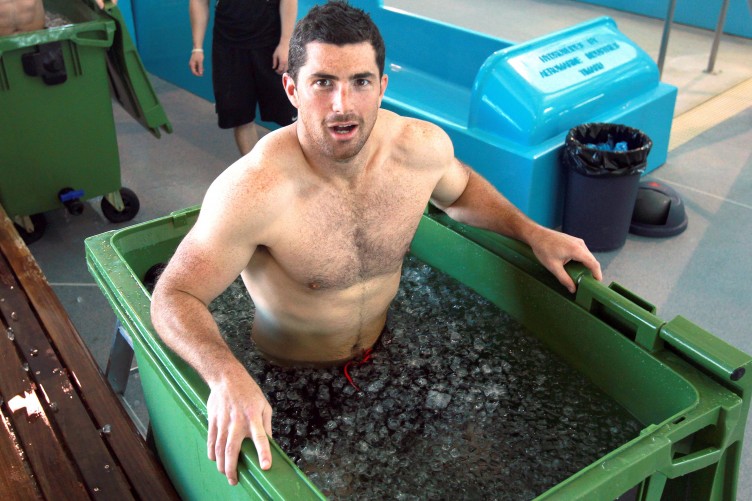Taking an ice bath after a workout can be beneficial for your body. The cold temperature will reduce inflammation and blood flow and tighten your pores. This treatment is also effective for the skin. There are several benefits to ice baths, including increased energy and improved skin appearance. In this article, we’ll look at some of the most common reasons to take an ice bath. Read on to discover the best time to take an ice bath.
If you are keen to take the plunge into the world of Ice Baths at home, check out our guide on how to take an Ice Bath at home.
Taking an ice bath after a workout
Taking an ice bath after a workout can provide a lot of benefits, but it can also cause a lot of discomforts. If you don’t know how to prepare yourself for ice baths, it’s best to check with your doctor first. Taking a cold bath alone can be dangerous, so be sure to talk to your doctor before you try this technique. You should also wear clothes while taking an ice bath, and only immerse the lower half of your body.
Many athletes swear by taking ice baths after a workout. These treatments target the muscles and aid the recovery process. Usually, athletes should only use ice baths after their hardest workouts. However, athletes have reported significant improvements in performance and recovery after taking ice baths. In addition, athletic trainers attest to the positive effects of ice baths on recovery and performance. If you are thinking of taking an ice bath after a workout, follow the guidelines below.
For a good post-workout recovery, an ice bath is a great option. Although it is difficult to keep the water cold enough to prevent muscle growth, it may soothe soreness and discomfort. Some athletes swear by the cold therapy, but it should always be accompanied by a doctor or health care professional. For the best post-workout recovery, you can get an ice bath at home by purchasing a simple and efficient cold tub. Unlike traditional cold baths, these ice baths are convenient and don’t take up too much space.
An ice bath can help reduce swelling and muscle soreness, helping you recover faster between intense workouts. It can also help you sleep better and reduce pain associated with delayed onset muscle soreness. An ice bath can help you improve your mental health, which is crucial for optimal recovery. If you don’t want to wake up aching, ice baths are the way to go. There’s no better way to get your body back on track than by using cold water after a workout!
It reduces inflammation
While an ice bath does have a number of benefits, some recent studies have concluded that it does not reduce inflammation or cellular stress. In fact, the opposite may be true – it might even hinder the positive adaptation to training stress. While this might not be a direct result of a cold water bath, it may be a beneficial way to balance short-term recovery gains with long-term training adaptations. So, is an ice bath for athletes a good idea?
One of the main benefits of an ice bath is that it decreases inflammation by flushing out metabolic waste products. This helps the body recover from intense exercise by flushing out lactic acid and increasing nutrient blood flow. Another benefit of an ice bath is that it brings down the body’s temperature, reduces inflammation, and slows heart rate. An ice bath also reduces fatigue, improves sleep, and lowers cortisol levels, which all contribute to mental well-being.
You should immerse your entire body in the cold water for around two minutes. It is OK to experience some numbness at first, but try not to be alarmed. If you are unsure of how cold the water is, use a meat thermometer. To ensure that the water is cold enough, add ice gradually until you reach the desired temperature. A good rule of thumb is to gradually increase the amount of ice in the water by three to one. Once you’re comfortable with the temperature of the water, slowly lower yourself into the bath and let your legs, arms, and abdomen submerge. If you have an injury, do not submerge your neck or shoulders, as this can cause swelling and pain.
If you have never had an ice bath, it might be difficult to understand how it works. In order to avoid injury and avoid hypothermia, take a five-minute bath as a start and gradually increase the time you spend in the cold water. Taking an ice bath may seem like an excellent way to relieve pain and reduce inflammation, but it is important to know what to avoid and what to expect from it.
It reduces blood flow
An ice bath can have a number of benefits, including helping to promote muscle recovery and reducing stress. However, the method is not without controversy. Some health experts warn that prolonged immersion in cold water can lead to hypothermia and cardiac arrest. People with diabetes should not take ice baths, as the disease impairs the body’s ability to regulate its core temperature. Therefore, it is important to seek medical advice before undergoing this treatment.
While an ice bath may not be as beneficial as a traditional soak in warm water, it is still widely used by many people for therapeutic purposes. A study from 2021 among college soccer players concluded that cold water immersion therapy was effective in promoting basic post-sport recovery. This is because the constricting effect of cold water helps to flush lactic acid and toxins from the muscles. This also promotes a faster recovery from strenuous activity, as the body’s own immune system responds better to the increased blood flow.
Regardless of the benefits of ice baths, it’s important to note that they should only be used for as long as 15 minutes. It is best to submerge your feet and lower legs first, before proceeding to the upper body. While an ice bath may feel great, do not stay in it for more than 15 minutes, as you will cause increased constriction of blood vessels and risk of hypothermia.
According to Dr. Nieto, taking an ice bath improves one’s mental health. Research on the topic has been mixed, but one study found that daily exposure to cold water significantly relieved chronic anxiety. A recent study also demonstrated that taking ice baths improves mental health, allowing the patient to feel refreshed and alert. This therapy has many potential benefits and is
worth trying. And who knows, maybe it will even become the new trend.

It tightens pores
Cold water is an excellent treatment for clogged pores. Not only does it shrink the size of your pores, but it also prevents future clogging. This method can even reduce the need for retinol and other expensive anti-wrinkle creams. The Korean beauties swear by it! If you’re wondering how to do it, read on to discover the best way to do it! Here are some of the most common ways you
can tighten your pores.
First, do not take an ice bath on a daily basis. Though this treatment may work, it’s best to limit its frequency. The opposite effect is possible if you take too much ice. Another mistake many people make is taking an ice bath too often. You should use a small amount of ice and avoid submerging your face in ice water for more than a few minutes at a time.
Another method of tightening pores is massaging ice over the face. Massaging ice on the face can minimize the look of wrinkles and fine lines. Since the ice helps constrict pores, it also unclogs larger ones. As a result, it helps makeup stay on your face longer. It also controls the natural oils that your face secretes, so your makeup will stay in place. The benefits of ice baths go far beyond tightening pores!
It improves recovery
While the practice of soaking in ice baths is not new, a recent Australian study questioned its benefits. The study published in the British Journal of Sports Medicine examined the effects of an ice bath on weightlifters. While the ice baths reduced muscle inflammation and delayed adaptation, subjects reported no increased pain or improved performance. Additionally, they experienced leg pain after taking an ice bath. Still, the research was preliminary and is not conclusive.
Another study published in the Journal of Physiology in 2019 found that ice baths actually hinder muscle protein synthesis. The implication is that ice baths are more effective at decreasing inflammation than increasing muscle protein synthesis. Nevertheless, if the goal is to speed recovery and minimize soreness, ice baths should be an essential part of your recovery plan. While an ice bath might not be the best recovery method for your muscles, it may still be worth a try after intense workouts.
An ice bath is a popular way to improve recovery after an intense workout. It helps to reduce muscle soreness and speeds up the recovery process following an intense workout. The benefits of an ice bath should be realized within two hours of exercise. In fact, ice baths may help improve recovery one to four days after an intense workout. If you’re considering taking an ice bath during your recovery, you’ll want to consult with a physical therapist before deciding on a specific method.
During an ice bath, it’s a good idea to get into the water a few minutes before a workout. But you need to make sure that you get into the ice bath safely and quickly. To prevent overexposure to ice, take your time and use a thermometer. You’ll need to add water if you’re not accustomed to the temperature. You should also avoid dipping your toes in ice water more than ten minutes after a workout.
